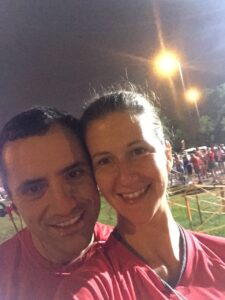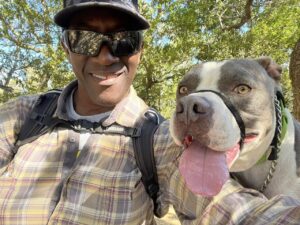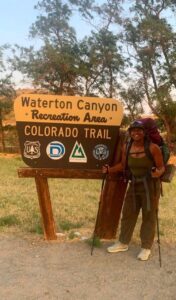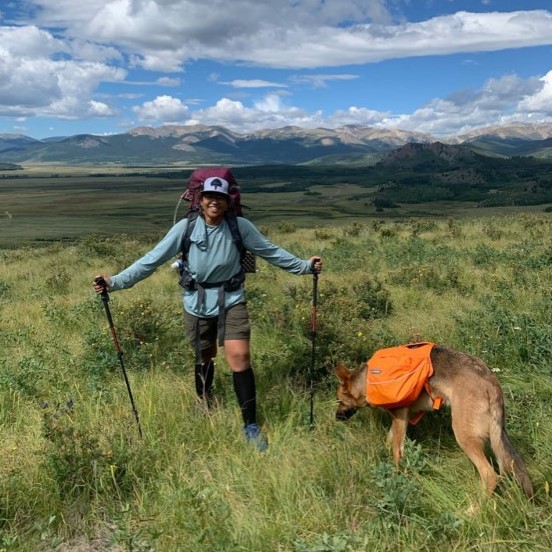Off-the-Clock.
-
The Hobby Hack
What’s Your Owl? Finding Time for What Fills You Up.How hobbies improve our lives.
After a week of video conferences, emails, phone calls, facilitating workshops, and preparing various deliverables, I disappear into the woods in search of a Great Horned Owl.
I love wildlife photography. I love it because it combines several of my hobbies: photography, studying animals, exploring nature, hiking, and conservation. It helps me disconnect from my work and return to my clients refreshed and ready for more.
Hobby [ˈhäbē] – noun – an activity done regularly in one’s leisure time for pleasure.
We all had hobbies as we grew up, didn’t we? Schools and communities make it easy for kids to do fun things that they love; “extracurriculars” for young people are built into our institutions. Yet most adults let those pursuits slip away.
Many of us are consumed by the daily grind. We work (at least) 40 hours each week. Some of us have families to care for. Some of us are involved with our community or church. Let’s face it, we’re busy. So, you might give me a strange look if I asked you, “What hobby you enjoy?”
If you are one of those people who doesn’t have a hobby, consider this: people who have hobbies report being happier, healthier and have higher life satisfaction than those who don’t.
What? All of that from participating in a book club or joining a hiking group? Yes, there is a ton of research that finds people who regularly engage in activities they enjoy are better off.
Here’s why hobbies are important:
- Hobbies take our minds and bodies out of our everyday routine and into a different setting.
- Hobbies help us grow. We develop new skills and connect with others.
- Hobbies enhance mental health and well-being. Some hobbies help us to develop resiliency.
- Hobbies help reduce some of the stress we endure.
- Engaging in hobbies can increase confidence and self-esteem.
- Hobbies provide a sense of purpose, especially for those who have retired or are no longer raising a family.
- Some might argue that hobbies make us more interesting.
So, this weekend, I might share some time and space with a coyote or a bobcat. But you do you. Find an experience that helps you — like my forays into nature help me — be happier, healthier and more productive.
A Bay Area TV show featured John in a piece about trail hikes! Check it out – John’s segment starts about 10 minutes in. OpenRoad: Saving shorelines and a trails challenge
-
Using Your Skills for the Greater Good
Making an impact outside of work.Your years of professional experience can help.
I’ve acquired and sharpened many skills throughout my career. Using them for philanthropy or fun just makes sense. Because of my 30+ years of consulting experience:
- I find it quite easy to integrate into existing teams.
- I’m comfortable with project work.
- I’m good at gathering information.
- I’m an active listener.
- I’ve honed my observation skills.
- My ability to communicate (write reports, speak to groups, etc.) has continued to improve.
Have you ever thought about using your “work” skills for the greater good? I recommend it.
One thing I’ve enjoyed doing in my spare time is participating in projects as a Citizen Scientist. I’ll save you a search:
“Citizen science is research conducted with participation from the general public, or amateur/nonprofessional researchers or participants for science, social science, and many other disciplines.” – Wikipedia
I enjoy nature and wildlife, so, the projects I join typically focus on things like that. For example, every year I participate in the Christmas Bird Count. It’s the longest running community science bird project in the world and it helps to fuel the Audubon’s work throughout the year.
This will be my third year working with the San Francisco Bay Bird Observatory. For the next eight months, I’ll be observing and reporting back on mating behaviors, nesting behaviors, and the rearing of young for three different bird species in a particular park near me.
If birds aren’t your thing, no worries. Citizen Science projects vary in subject matter and duration. It should be easy for you to find something that interests you. Here are a few projects you might consider:
- Project Budburst – Help with climate change.
- BugGuide – Observe spiders and insects.
- FrogWatch USA – Experience the mating calls of local frogs and toads.
- NestWatch – Collect nesting and breeding information.
- Ancient Lives – Transcribe and catalogue ancient texts.
- Old Weather – Catalogue climate-related entries of World War I ships.
- Spritacular – Chase Transient Luminous Events (TLEs) from the ground.
- Cloudspotting On Mars – Find exotic clouds high in the Martian atmosphere.
- Grow for Tomorrow! – Grow, observe, and share insights on unique seed varieties that can withstand changing climates, pests, and diseases.
- Are we alone in the universe? – Help answer one of science’s most important questions.
- Mountain Rain or Snow– Collect real-time observations of precipitation in the mountains.
- Citizen Volunteer Water Quality Monitoring Program in Alabama’s National Forests – Help collect water data in priority watersheds.
- Flu Near You – Help predict and prevent the next Flu pandemic.
There are tons of projects looking for volunteers. Do a little research, find something interesting, and help by using the skills you’ve developed over the course of your career.
-
Professional Networking: Challenges and Tips
Tips on navigating the modern professional networking landscape.Networking anxiety? It’s not you; it’s…everything.
Ah, networking. It conjures up images of awkward conversations and the occasional LinkedIn request from someone you met for 30 seconds at a conference three years ago.
In theory, we should be pros at connecting by now. Social media, messaging platforms, and endless online groups make it easier than ever, right? Yet, for many, like me, making meaningful connections feels harder.
So, why is networking still such a puzzle? More importantly, why should we bother solving it?
Let’s break down the current networking landscape and look at some ways to navigate it.
Why It’s So Hard
It’s no small feat to meet new people these days. Here are just a few obstacles:
- Digital Overload. Remember when emails were novel and logging onto Facebook was a thrill? Now, we’re barraged by notifications from Slack, Teams, LinkedIn, WhatsApp, Instagram, Facebook, etc. The result? A diluted experience. We’re perpetually “connected” but feel completely, unironically disconnected.
- Work-from-Home Culture. Gone are the days when you’d bump into someone in the elevator and spark up a quick chat. Now, it’s all about navigating awkward pauses and frozen screens. Yes, you could meet someone on Zoom, but — even if there are no mute button mishaps or spotty Wi-Fi — digital networking lacks the magic of face-to-face interaction.
- Inauthentic Connections. After some tough years of juggling a global pandemic, political divisiveness, and a tsunami of “influencers,” people are seeking real connection. They are serious about protecting their energy and exhausted by the idea of shallow networking attempts.
- Fear of Vulnerability. Forming close connections requires some level of openness, and people are wary of vulnerability with new acquaintances. Past experiences, especially in an era where online criticism or “cancellation” is common, can make people more protective of their privacy.
Why Networking Still Matters
Why not simply abandon this whole networking thing and fade into algorithmic shadows? Tempting as that is, it’s not a winning strategy. Here’s why:
- Opportunities come through people. Jobs, collaborations, clients — they’re all people-driven, and most of them pop up where you least expect them. That project lead you met at a conference? They may just need your expertise six months from now.
- We learn from others. Networking isn’t just about getting what you want; it’s about learning, growing, and sometimes even changing course because someone’s insights gave you a fresh perspective.
- Connection is healthy. Genuine, effective networking is good for our mental and emotional health. Isolation is real and it’s toxic. We need allies, mentors, and even that person who’ll remind us it’s okay to put “multi-hyphenate creative” on our LinkedIn.
Ideas for Networking
So, how do you navigate this weird, wired world of networking without losing your sanity? Here are a few ideas:
- Try niche groups. Instead of joining every social network group under the sun, focus on one or two groups that align with your interests or goals. That could mean a local coding meet-up or a writers’ group. The more niche, the better! You’ll build deeper connections if you’re all passionate about the same thing.
- Change your approach. Think of it like a game. Don’t approach networking as a main mission (because let’s face it, that’s a lot of pressure, and that’s when things get weird). Instead, lower the stakes. For example, when you go to an event, tweak your goal. Maybe your target could be asking one interesting question to each new person you meet. Maybe you’ll get a laugh out of it and, even better, an instant connection.
- Do it yourself. If you’re intimidated or bored by the networking opportunities in front of you, take control and host something. That way, you can design the experience you want. It could be a Zoom happy hour with a few people in your field or an in-person coffee meeting. Chances are, others are looking for something similar.
- Focus on quality. If you’re the kind of person who’s horrified by the idea of mass introductions, go for quality over quantity. Instead of meeting 50 people in one go, foster one meaningful connection a month. Send a friendly email or message to someone you admire or whose work interests you. No pressure to make it “networking” — think of it as making a friend.
- Use social media in small doses. You don’t have to always be “on.” Follow up with specific people, comment thoughtfully, and engage with purpose. Like a LinkedIn post here; leave an Instagram comment there… It doesn’t have to be much. Consistency and authenticity pay off.
Looking for a Boost?
In 2024, several new and innovative networking apps have emerged, catering to various aspects of professional and personal connections. There’s Bumble Bizz, Lunchclub, Meetup, Timeleft and many, many more.
I recently dabbled in Timeleft, a social app that organizes group dinners for strangers to meet new people and expand their social networks.
I started by filling out a short survey about my interests and hobbies. Then, the app’s algorithm matched me with five other like-minded people for dinner at a local restaurant.
Pulling up to the restaurant, I was apprehensive but hopeful. Once I walked in the door and saw a table of smiling faces, my awkward feelings melted away. My group had similar ages and interests; we shared a dinner full of genuine laughter as we discussed our motivation for joining Timeleft, our families, and our plumbing adventures. I can honestly say it was an absolute delight! We now have a group text chain going and are trying to plan our next dinner.
-
Calming the Anxiety of Uncertainty
Faced with constant disruption and an unknown future, how do I stay grounded, level-headed, and energized?What’s fun got to do with it?
Faced with constant disruption and an unknown future, managing anxiety stemming from uncertainty can feel daunting. For me, the solution requires a consistent and thoughtful mix of mental and physical activity. Here’s how I stay grounded, level-headed, and energized:
I work out.
My household is currently training for a half Ironman. To be clear, it’s my husband who’s doing all three sports; I’m doing the running on a relay team with friends and swimming as cross-training. The kids are gearing up as our cheer squad. There’s no such thing as an individual sport. It might be an individual performance, but it still requires a team.
Training demands focus, which means:
- tracking mileage and strength sessions
- meal planning and prep
- stretching, foam rolling, and massage gunning
- dialing down stress
- opting out of events that start after 4 p.m.
- sleeping instead of binge reading
- coordinating schedules, vacations, and work travel
A former mentor of mine used to say, “If you want performance to go up, you have to tighten the boundaries.”
The physical workouts take time. The cognitive load takes up head space. Both require energy.
Being in the “master’s” bracket means less room for error. It’s also brought up my fears of injury and objections. In short, training has been more of a mental game than a physical one. Come to think of it, that’s been the case with all my exercise pursuits.

While motivation got us started, it’s discipline, commitment, and community that keep us going.
While motivation got us started, it’s discipline, commitment, and community that keep us going. Times get tough. Muscles get sore. Heads get foggy. Decisions made months ago look insane today. Quitting would be easier than doing the work.
And yet we find ourselves trudging toward this goal of 70.3 miles.
Why?
Because it’s fun.
You heard that correctly. It’s fun to bump up against my comfort zone and actively expand it. It’s fun to talk about how grueling the workout was over bagels and coffee. It’s fun to be outdoors, try new routes, experiment with different snacks, and stretch whilst watching the latest rom-com.
Between now and race day, we’re likely to see at least three or four disruptions to our routine. We don’t know what the conditions will be like or how we’ll feel when it’s go-time. But that’s not what we think about.
We keep our attention on today, influence what we can, and look for joy along the way. Doing so is exactly what helps us stay ready to face an unknown future.
-
How We Will Survive with Generation Z
What sets Gen Z apart from the rest of us and how can we best work with them? Step 1: take the time to learn more about these remarkable people.My experiences with the newest generation entering the workforce
I was talking to a group of fourteen-year-olds about how far data storage had come in the last decade. I reminisced about taking floppy discs to and from school. When I finally left memory lane, I was met with blank stares. They looked around to see whether anyone else in the room understood the “innovations” of a time past.
The following Monday, I brought in a floppy disc, retrieved from a cabinet in my parents’ house, frozen in time circa 1999.
“Did you 3D-print that?”
My millennial brethren, we’re getting older.
For the better part of a decade, I had the privilege of being an educator in the public school system. As I worked with my Gen Z students, I learned a lot about what motivates them and how they learn. But I wanted to know more, so I did some research — surveys and one-on-one interviews — to delve deeper into their unique mindset.
During my interviews, the shocks kept coming. Just for fun, I asked the iconic question:
Were Ross and Rachel on a break?
A majority of them replied, “Who are Ross and Rachel?”
Considering their access to information, you’d think they’d know all kinds of trivia! These kids with their superior tech knowledge have the world at their fingertips. They must be lazy, or at least indifferent.
Maybe you’ve had similar thoughts, or heard comments like this from peers. Maybe you’ve even had comments like these directed at you. Every time a new generation emerges, the older generations doubt them. As a millennial, I felt it, and I’m sure our Gen X predecessors experienced the same.
These feelings are natural. Doubt is a product of unfamiliarity.
But my experiences and research turned me around on Gen Z. So let’s reframe our goal.
How We Will
SurviveThrive with Generation Z?Step One is understanding them.
So what sets Gen Z apart? And how can we best work with them?
- Gen Z grew up in a tech world. They are the first generation made up only of “digital natives.”
- They prefer working in project teams with five or fewer people.
- During training or onboarding, they prefer an established team member to guide them through the process, with occasional check-ins for feedback. It’s essential to build this into the onboarding process to maintain mentorship and make new hires feel welcome and trusted.
- Many of Gen Z prefer a hybrid work format. Working from home is the least popular option. Unlike many of us, Gen Z’s education was heavily impacted by the COVID-19 pandemic; they see the value of working from home but prefer to mix it with the traditional in-office format.
- Many of them prioritize work-life balance and are willing to take a lower salary to achieve it.
- If there is an issue in the workplace, many will prefer to let their manager know about it, rather than letting it go. We should foster an open and collaborative environment. Lack of experience does not mean lack of ingenuity.
- In fact, their biggest frustration with older generations is close-mindedness and the “we’ve been doing it this way for years” mindset. This is one of the most defining characteristics of Gen Z – they want change and are not afraid to speak up about it. For example, they are acutely aware of which cultural norms are outdated in today’s workplace; we should listen to them.
- Their biggest fear when entering the job market is competency. Having been students during the pandemic, many feel they‘re not prepared to perform. They feel the expectation of perfection from the get-go. They also sense a lack of confidence from older generations. We should provide a nurturing environment that allows them to grow and all of us to build upon their unique skills and perspective.
- Compared to my generation, they are more self-aware at a young age. They prefer a human-centric approach to work and consider it crucial to understand who they work with.
Doubt is a product of unfamiliarity, but establishing a baseline of familiarity is the first step toward overcoming this barrier. Some of the most valuable lessons I’ve learned were taught to me by Generation Z. Take the time to learn more about these remarkable people and see how they can help us thrive.
And yes, Ross and Rachel were on a break.
-
Training My Whole Self
In 2016, I ran my first marathon. I learned a lot. Here’s what came across loud and clear on my journey to accomplish a physical, emotional, and mental challenge.The Five Things My One Marathon Taught Me
In 2016, I ran my first marathon. I say first like there were more. Nope. Unlike the potato chip, one is just fine, thank you. That’s not to say I didn’t gain anything from my one-and-only marathon. I learned a lot. Here’s what came across loud and clear on my journey to accomplish a physical, emotional, and mental challenge.

Jaime Shearer with her husband, Eddie before the big event.
Get ready to change. For me, training for a marathon meant running 5 to 20 miles a day, 5 days a week. Recovery and fuel needs were my guardrails for action. That meant knowing and acting on my requirements for nutrition, sleep, stress reduction, and support. And higher performance demanded tighter boundaries, which affected every area of my life. A huge goal aligns and balances all behaviors.
Remember that no one crosses the finish line alone. While it’s true that the miles don’t run themselves and no one can run the miles for you, it’s also true that community is critical for a big event to succeed. From street closures to water stations, people from diverse backgrounds come together to pull off a race. A simple “thank you for being here” or “I couldn’t do this without you” brought smiles to faces and went a long way in filling my cup long after the water ran out. Encouragement is sustenance.
Be present. My training volume forced me to tune in and listen to real-time feedback from my mind and body. Thoughts, feelings, and sensations sometimes conflicted with one another, and it was up to me to determine the next right thing. Being curious about what was happening and evaluating all feedback as information helped me decide when to push and when to rest. Being in the moment yields good decisions.
We do these things not because they are easy but because they are hard. — John F. Kennedy
Take one step at a time. Look, running 26.2 miles is daunting. At mile 16, I was ready to quit. Thinking about all the work left and all the time it would take, all at once, might have caused me to give up. Instead, focusing on taking just the next step helped me finish.

Jaime and her many hard-earned medals.
Measure what matters. Knowing my finish time wasn’t going to be stellar, I relaxed around that particular result. Instead I assessed my enjoyment from day-to-day. Because I wasn’t riddled with angst about my time and had an eye on fun, I thought differently about running and kept going when things got hard. Choosing to measure joy supports desired behaviors and well-being.
Since then, I’ve continued chasing joy through physical activity. Running, yoga, CrossFit, hiking, you name it… Getting active helps me access the best within me to better contribute to others. Isn’t that what makes meaning?
-
The Nature of Resilience
The stresses I feel from work are similar to those I feel in trail running. Here's why that connection is helpful.Getting outdoors can help your mental health and boost your work stamina.
Today, the importance of mental health is being discussed everywhere. We’ve seen top athletes back away from big sporting events to take care of their mental health. It’s being discussed on talk shows. We hear about it in reference to school-age children. Unsurprisingly, we hear about it in the workplace, too.
Like most professionals, my day-to-day life can be stressful. I go from meeting to meeting…client to client…and spend a lot of time working through problems to help my clients succeed. At times, it feels overwhelming.
It’s during these times the importance of mental health comes to the forefront of my mind. It not just small kids, big-time athletes and other celebrities who need to take care of their mental health. It’s all of us…including us corporate types.
There are a lot of ways to maintain your mental health and they vary considerably.
Many people seek professional counseling and medication. Some find that changing their diet or getting more sleep has a big impact. Many simply need someone trusted to talk to. Others practice mindfulness.
Many researchers are talking more and more about the benefits of spending time in nature. They find that immersion in nature can benefit both our mental and physical well-being.
I completely agree with them. For years, I’ve been setting aside time to be outdoors. I hike, I bike, I kayak… Just about any outdoor activity you can imagine, I do it.

Dr. John Graves and his dog, Jax, on a hike and enjoying the great outdoors.
Most of my time is spent trail running. I’ve run lots of different distances: everything from 5Ks to ultra-marathons. My most common/frequent/favorite distance is the half-marathon. I recently completed my 88th half-marathon race.
Most of these races are on trails. There’s something about being out in nature (on dirt, in the hills, scaling mountains, in the woods, plowing through sands, etc.) that helps me to be more resilient.
Being mentally strong helps me adapt to change and cope with adversity.
The stresses I feel from work are similar to those I feel in trail running. Exposing myself to the stress of a trail run and learning how to manage through it helps me in other aspects of my life, including life back in the office.
Being in nature and running trails is my thing. Find your thing…and leave some white space in your calendar to actually do it. Mental health is something we should all work on.
-
Maintaining Motivation
What the heck does a road trip have to do with a work project? Surprisingly, they elicit similar thoughts and reactions. Here's what I learned.What your road trip can teach you about project success.
I recently returned from vacation. My family and I joined many of our fellow Texans in the annual summer escape from the heat and ventured to the mountains of Colorado. Sure, we could have flown, but we decided to take to the road and enjoy the freedom that comes from being in control of the journey. As we drove, the experience started to remind me of a project.
Road Trip
Day 1
The trip started out early on a Sunday morning. We were full of energy. The SUV was packed, YETIs were filled with coffee, snacks were at the ready, and teenage sons had their phones fully charged. Things were great, until they weren’t. After five hours of driving, with five more to go, my back started to hurt. My teenagers were bickering like eight-year-olds, and everyone was starving. I even heard a few “how much longer?” comments. I started having doubts…was driving the right decision? Images of the Griswold family flashed through my head.

Family photo op at the halfway point (Texas panhandle).
Fast-forward another five hours: after stops for lunch, fuel, and restroom breaks we approached our day-one Texas Panhandle destination. We made it! As we approached the highway hotel and the end of the day’s journey, I felt new energy. Sure, we weren’t in Colorado yet, our stopping point was far from glamorous, and there was more driving the next day, but we all felt a sense of accomplishment.
Day 2
We hit the road after a quick, mediocre, breakfast buffet at the hotel. The good news: the day 2 trek was only six hours; the bad news: the day 2 trek was six hours. Coming off a below-average night’s sleep in a crowded double queen room filled with road noise, I felt less than spectacular. Why did we do this again?
Fast forward…Traci (my wife) offered to do much of the driving, and I dozed off while listening to music. We made it to our high-elevation destination by mid-afternoon. The mountains were spectacular, the condo was spacious with a great view, and we were walking distance from everything we needed. After a nice walk, a couple drinks, and a casual dinner with the family, all was well. It was worth it! We did it! We were ready to enjoy a week in the mountains. We even felt confident about the drive home at the end of the week.
Projects

The incredible Rocky Mountain views.
What the heck does a road trip have to do with a project? Surprisingly, they elicit similar thoughts and reactions. Think about it. How do you feel at the beginning of a project? What about the middle? How does it feel when you hit a milestone or — even better — complete the project?
Project Beginnings
Most people are highly motivated at the beginning of a project. Sure, there is some nervous energy, but there is energy…natural energy! Leaders and team members are eager to get started and ready to take on whatever comes their way. Project leaders may even organize a kickoff event, complete with team dinner or celebration, to mark the occasion.
Change management practitioners should capitalize on the project beginning and design interventions that create even more “buzz.”
It’s a great time to seek out and engage the Innovators and Early Adopters in the organization. These people will be on board with the change and will build support from within the organization.
Project Middles
The middle is a slog. Middles are the time when people think, “Why did I sign up for this?” Project Managers and Change Managers must engineer wins to keep the team going. Maybe the project is organized in sprints. Sprints create natural milestones that team members rally around. Even better, they are often followed by “sprint retrospective” meetings to discuss what went well and what could be done better in the next sprint. Retrospectives give team members an opportunity to be heard and play a role in what happens next. This is essential to engagement, because people crave a sense of control.
Change Managers work with project managers to identify and create interim goals. We want team members to think “I was successful, and I can be successful again.” Interim goals feel more attainable than project completion. Team members are motivated when milestones or goals are met. They feel a boost.
Organizations should reward people when goals and milestones are met.
For example, “down days” (no meetings allowed), offsite events where the team completes a non-work activity together (e.g., a community service project), or spotlight awards – nominees are acknowledged and thanked by leadership and nominators are entered into a raffle for a prize.
Project Ends
Just as sprinters run a little faster at the end of the race, team members are motivated to push a little harder at the end. Natural energy abounds. Team members begin to evaluate the experience as a whole. Ends create a great opportunity to motivate through connection and impact. Are there photos of teamwork, quotes from stakeholders, events for sharing stories, or music that sums up the experience? Use them. Change and Project Managers must capitalize on desire to finish strong.
Conclusion
The element of time is powerful. Daniel Pink writes about this in his book, When. There are times when energy and motivation come naturally and times when they don’t. Change practitioners must intentionally capitalize on times of high performance and shore up points of lower performance. And travelers should plan their road trips accordingly.
-
Don’t Travel Like a Rookie
When it comes to traveling, I am a PRO. Well, I was a pro, pre-COVID. I found I’d forgotten almost everything I knew about traveling. Here's how I re-learned the art.How I remembered everything I forgot about flying
I got into consulting because I wanted to travel. Over the course of my career, I have worked in 70 cities, in 11 countries, and on 4 continents. On weekends and holidays I travel just for fun…visiting another 26 countries, 2 more continents and countless other cities. In total, I’ve flown well over 2,500 times; I am the definition of a frequent flyer. I’ve had status on most major airlines and was Premier 1K (the level above Platinum) with United. I’ve had highest-level status with several big hotel chains including Hilton (Diamond VIP), Hyatt (Globalist) and Marriott (Platinum Elite). Over the years I have taken a lot of great vacations for free by using points. Not only that, I have probably given away more frequent flyer and hotel points than most people accumulate in a lifetime. I say all of that to say this: When it comes to traveling, I am a PRO.
Now, having said that, let me tell you this… In December of 2019, I was working with a client in Dallas, TX. On December 14, 2019, I flew first class from Dallas back to San Francisco. It would be my last flight for the next 20 months. I was home for the holidays and was happily working remotely in January and February of 2020. Then the pandemic hit and everything shut down. So, for 20 months, I was grounded.
To be honest, I didn’t miss the life of Ubers, airports, airplanes, rental cars, hotels, per diems, expenses and the headaches that come with all of that. For 20 months I worked from home. I actually never left the state of California. I was content jumping in the car on weekends and traveling up or down the coast or finding some nearby mountain to explore.
Then, all of a sudden, travel resumed (for me). In the last three weeks (from Aug 12-Sept 3), I have flown on 18 planes!
And I found I’d forgotten almost everything I knew about traveling. I was a travel rookie once again.
On my first trip, I ordered an Uber to take me to the airport. I did not think to look at my phone again to check on my ride. For some reason, I thought I would get a call when the driver arrived. I happened to see him sitting outside. He told me he’d arrived 15 minutes before I came out. ROOKIE MISTAKE #1.
I arrived at the airport and jumped in a line. Then I noticed everyone already had boarding passes and tags for their bags. I thought, “Hmm… Where did they get those?” Then I remembered I needed to visit the kiosk to get a tag for my bag. So, I got out of line. ROOKIE MISTAKE #2.
On that same trip, I had a connection. ROOKIE MISTAKE #3. When I deplaned, I realized I had lost my paper boarding pass for the second flight. ROOKIE MISTAKE #4 & #5 (paper ticket and losing it).
After managing to get on board for the second flight, I realized there was another stop before I would finally get to my destination. How could that be? Well, as it turned out, there was some small print on my email confirmation that said I would be making another stop, but I would not be getting off the plane. So, apparently, I did not read carefully when I was booking my flight. ROOKIE MISTAKE #6.
All three of those flights were delayed. I got to my final destination after midnight. After all that nonsense, I had to retrieve my bag and find transportation to my hotel. There was severe weather, which meant no Ubers or taxis. I waited 40 minutes before a taxi van showed up. So, along with three strangers, I jumped in the van and made my way to the hotel.
During the next three weeks I had several similar experiences with delayed flights…struggles with ground transportation…fights with taxi drivers…and so on. In three weeks, I think I had enough headaches to cover the previous 20 months. I’m all caught up now and hoping to regain my Travel Pro status.
Here are a few more pro tips for those of you who have not traveled in a while:
- Update your credit card information stored in apps. For example, your card info in Uber will eventually expire, and it’s a pain to have to update it while you’re trying to go somewhere. ROOKIE MISTAKE #7.
- Speaking of, the Uber app has changed. So, take a look at it before you need to use it. ROOKIE MISTAKE #8.
- Be sure to pack all those small things that make traveling a little easier, like ear buds or headphones. I forgot mine on the first trip. ROOKIE MISTAKE #9.
- Don’t let the delayed flights fool you. My flight on Friday, Sept 3 was scheduled for 5:55pm. As I was leaving the office, I notice the flight was delayed and wouldn’t be leaving until 8:37pm. With more than two and a half hours of extra time, I decided to go downtown instead of going to the airport. So, I found a nice restaurant and ordered dinner. After ordering my meal, I checked on my flight again. Instead of 8:37pm, it was now 6:37pm. I cancelled my order and walked outside to order an Uber to quickly get to the airport. Then I checked again and the flight was going at 6:01pm! So, it went from being a two and a half hour delay to only being a six minute delay and I was nowhere near the airport. Assuming the delay time would stick is ROOKIE MISTAKE #10.
I got there in time and I was the first to board the plane, so it all worked out. Until we pushed away from the gate and sat on the tarmac for an hour and a half. Oh well…
Safe travels to all!
-
A Mom’s Guide to Raising a Thru-Hiker
When Kerri's daughter decided to hike, off the grid, for weeks, she had to learn to cope. Read about how our Learning and Development Director navigated her own journey, as a worried mom.This month, my 23-year-old daughter set off to solo hike the Colorado Trail. After a flurry of phone calls, text messages, and test pings on her Garmin GPS, I was cut off. In the days after she left, I trolled in vain for any sign of life, coming up with only an occasional Instagram photo.
The Colorado Trail is a continuous, narrow, 485-mile path from Denver to Durango. It passes through national forests, wilderness areas, and five major river systems, not to mention penetrating eight of the state’s mountain ranges.
In the reflective hours of sleepless nights, awaiting a crumb of communication from my baby, I wondered, “Why did she do this?” What made this young beautiful being want to bury herself deep in nature, alone, on such a harrowing adventure? Sure, it’s described as an amazing and life-changing experience, but it’s also described as a four-to-six-week journey bearing risks of hypothermia, dehydration, lightning, and snowfields in mid-summer. (WHAT?!)
Another question keeps knocking around in my head: “Is she prepared?”
What mindsets, skillsets, and toolsets are required to make this journey? Did I do everything I could—as her mom and biggest fan—to prepare her for this challenge? To be successful? Not just to finish, but to learn from and be transformed by the experience?

Kerri’s daughter set off to solo hike the Colorado Trail.
Here are my thoughts on what it takes to raise a thru-hiker.
MINDSETS
Growth Mindset—Reserve the right to be smarter tomorrow than you are today.
Gratitude Mindset—There’s a gift in every experience you have if you know how to look. Expand your horizon and find gratitude for something…anything…everything.
Positive Mindset—Expect things to work out for you and don’t borrow trouble.
SKILLSETS
Resilience—Yesterday’s experience is behind you. Today is a new day with new steps to take. Get up, put your shoes on, and take the first next step.
Self-Reliant Learning—Ralph Waldo Emerson, the 19th century transcendentalist philosopher said that non-conformity and self-reliance were the secrets to happiness. Take responsibility for your own life experiences.
Empathy—Be kind to yourself. In the darkness of night, with only your over-active thoughts and your hyper-vigilant senses, be the best listener and thought partner to yourself that you’ve ever known.
TOOLSETS
Nature’s Moments—When you notice your thoughts cycling or fixating on the past or future, step out into nature and take notice of its beauty. Breathe in the fresh air. Let the sun touch your skin. Take in an eyeful of lush green color. Listen to the sounds of birds, insects, and trees whispering in the breeze.
The Path—Someone has been down this road before. When you feel exhausted, hungry, and miserable, focus your attention on your feet. Feel them solidly on the ground. Think about where they’ve been and where they’re going. Say a word of gratitude for the work they put in on your daily grind.
Navigation—Feeling lost? Letting your mind over-process every little thing? Having a colossal self-talk berating? Reset your thoughts with your north star. Find one bright spot, literally or figuratively, and admire it. Tune out the noise of everything else and feel a connection with this guiding light.

“Tune out the noise of everything else and feel a connection with your north star.”
If you thought these are only for my precious thru-hiker, you got me all wrong. I need these things as much as she does, as I cope with my hopes and fears for her adventure.
If you have a loved one embarking on a risky path, maybe these mindsets, toolsets and skillsets will help you accept what they need to do. And once you’ve accepted their journey, use it as a self-discovery adventure of your own.
- Stay curious. Use questions to navigate the problem solving, troubleshooting, learning, and discovery.
- Stay grounded (physically and mentally). Don’t attach your self-worth to the outcome.
- Stay open. Listen generously. Stand in the worn, weather-beaten shoes of your adventurer and imagine the view.
It may be clear to a few of you that this post is an elaborate ploy to brag about my daughter. Yes, she’s really quite something. Thank you for reading.
